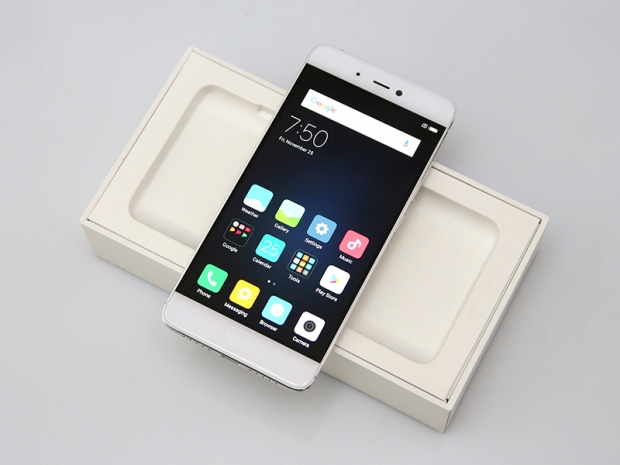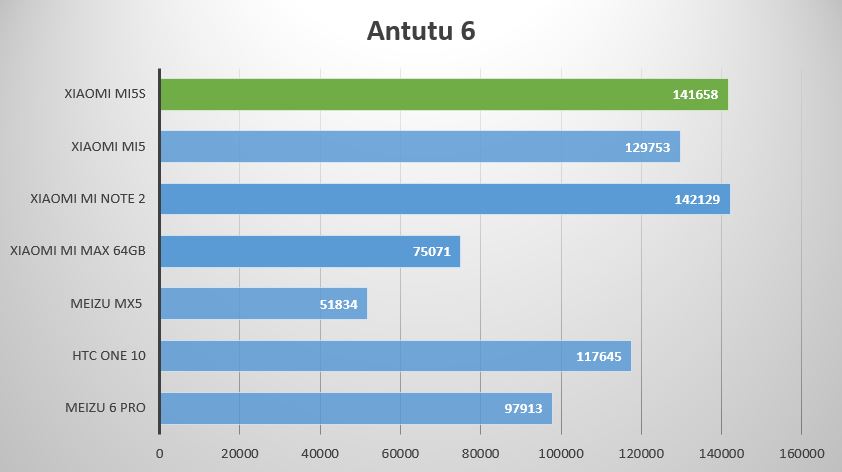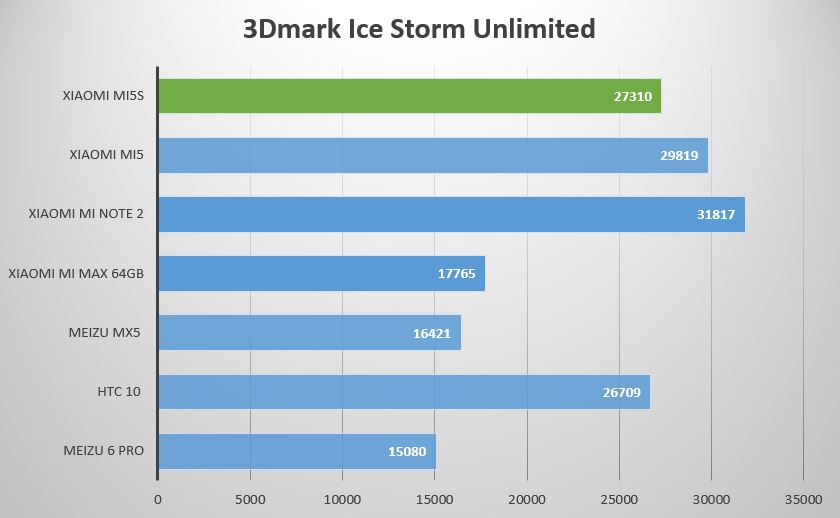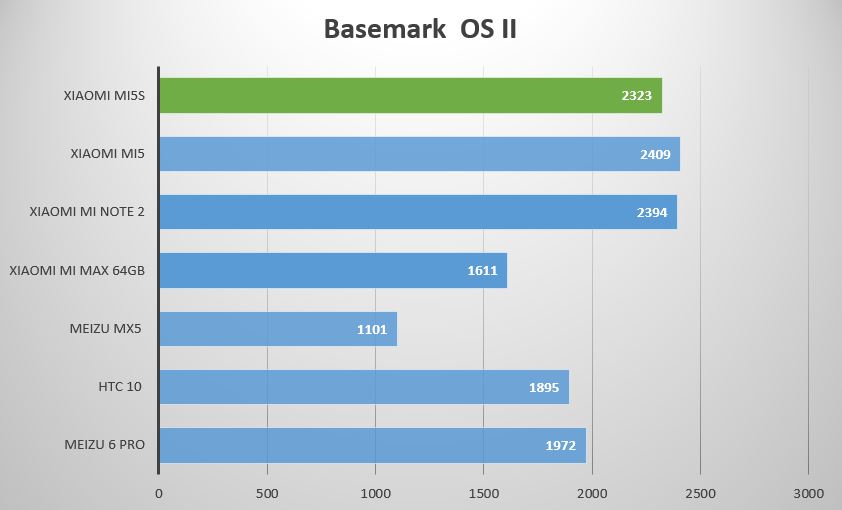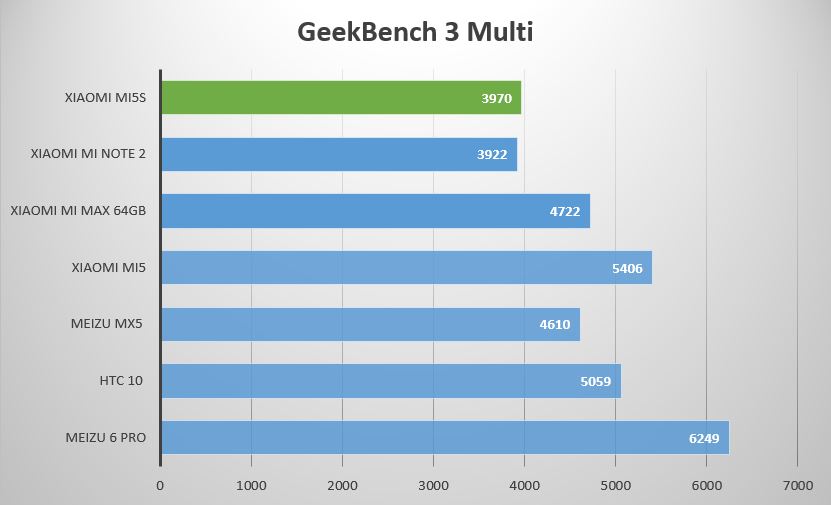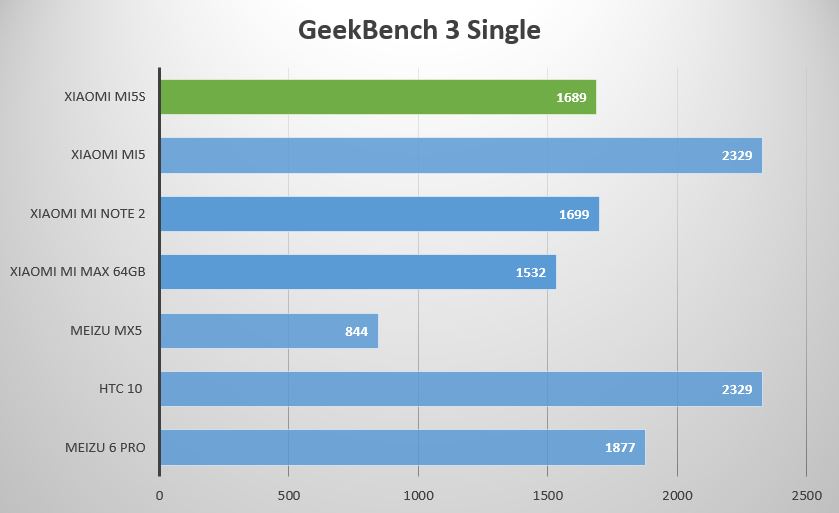Index
Xiaomi Mi5s Specs and Performance
So, the Mi5s is a new phone, but it shares a lot of DNA with its predecessor. This is not a bad thing, since the Mi5 was a good device to begin with, and since its launch, Qualcomm has rolled out a new chipset.
The Snapdragon 821 is the fastest Qualcomm SoC available today, but in all honesty, it’s not a huge leap forward over the 820. Both still have the same GPU and in both cases they rely on fast UFS 2.0 storage and LPDDR4 memory.
The SD821 sports two Kryo cores clocked at 2.15GHz, backed by two additional cores at up to 1.6GHz. The original SD820 was clocked at 1.8GHz and 1.36GHz respectively, but there’s a catch. Xiaomi employed faster SD820 parts in all but the 32GB variant of the Mi5 and guess what – that variant was also clocked at 2.15GHz and 1.6GHz, just like the “new” SD821.
The Mi5s got a new camera and the flagship Pro variant with 4GB of RAM and 128GB of storage also packs Force Touch support and some ceramic trim, but that’s about it as far as new hardware goes.
- SoC: Qualcomm Snapdragon 821
- CPU: Four 64-bit Qualcomm Kyro CPU cores up to 2.15GHz
- GPU: Adreno 530
- RAM: 3GB LPDDR4 (up to 1866MHz)
- Storage: 32/64/128GB of UFS 2.0 internal storage, not expandable
- Display: 5.15-inch 1080p IPS panel
- OS: Android 7.0 with MIUI 8.x on top
- Rear camera: 12-megapixel Sony IMX378 sensor, f/2.0 aperture, 1/2.3” sensor, 1.55µm pixel size
- Front facing camera: 4-megapixel sensor, 1/3” sensor, 2um pixel size
- Battery: 3200mAh, integrated
- Dimensions: 145.6 x 70.3 x 8.3mm
- Weight: 145g
- WiFi and Bluetooth: 802.11b/g/n/ac WiFi and Bluetooth 4.1
- Sensors: ambient light, direction, accelerometer, compass, proximity, GPS, A-GPS
- Other noteworthy features: NFC
- SIM card: dual SIM (nano SIM), dual standby
- Network support:
2G: GSM 850/900/1800/1900MHz
3G: WCDMA 850/9001900/2100MHz
4G: FDD-LTE: 1800/2600MHz, TDD-LTE: B38 / B39 / B40 / B41 (Make sure to check regional compatibility prior to making a purchase)
That’s a rather nice spec, but since it’s very close to the Mi5, we won’t waste time commenting the basics. Let’s underscore the differences between the Mi5 and Mi5s – the Mi5s has a new camera sensor, Force Touch support in flagship model, marginally higher battery capacity (+200mAh), but it lacks the IR blaster found on the Mi5 (and indeed most Xiaomi phones out there, even $100 Redmis). Yes, it’s a millimetre thicker, but that’s not a big price to pay for a superior camera, 2.5D glass on the front, and a somewhat bigger battery.
Let’s check out some synthetic benchmark numbers:
As you can see, there's not much more we could wish for in Antutu. It's on a par with other SD821 devices out there.
We got some weird results in 3DMark, as the numbers were closer to SD820 devices than expected. This is probably a software problem, since other benchmarks don't suggest a drop in GPU performance.
The Basemark score is more of the same. For some reason, the results were roughly on a par with the Mi5, but still ahead of the HTC 10.
The Geekbench Multicore score is unimpressive, but that's true of all devices based on Qualcomm's latest Kryo-based Snapdragons. However, Geekbench doesn't "like" SD821 devices for some reason. This is not the first time we've seen the SD820 outperform the new SD821 in Geekbench.
Geekbench's single-thread bench was equally unkind to the SD821. As you can see, it doesn't match the slower SD820 in single-core tests, either.
While new 83x-series Snapdragons are on the way, this does not mean Snapdragon 82x devices will become obsolete overnight. Even the “old” SD820 is still a very potent processor and the SD821 is marginally better in some scenarios.
In reality, the average user will never tell the difference between a Snapdragon 821 and 820 device in everyday use. Both offer plenty of performance for anything you can throw at them, and they’re future-proof.
We’re looking forward to new 10nm parts, but frankly speaking, we can already see the mobile SoC industry maturing and moving to an Intel-like upgrade schedule. In years gone by, it was enough to squeeze a new ARM CPU and GPU architecture to an existing node and get a huge performance uplift.
This is no longer the case. Mobile SoC evolution will require a lot more effort and investment. While we’re not going to see Qualcomm and other SoC-makers implementing an approach similar to Intel’s “tick-tock” model anytime soon, it’s obvious that the industry is heading in that direction. Chipmakers will need to tap more advanced notes and architectures to ensure rapid evolution and stick to current product cycles.
This is the new normal. Get used to it!

